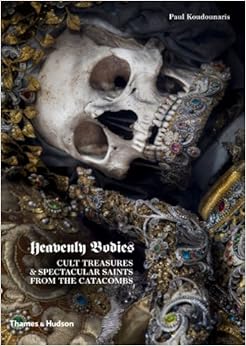
The evening before last I went with one of our Mission Planning
group to the diocesan Parish Development Office's presentation of the latest
slew of research to be produced by the Church centrally on church growth.
From Evidence to Action (FETA for short,
very cheesy, ho-ho) is a follow-up to an earlier document,
From Anecdote to Evidence (or FATE, possibly. I'm not sure what
came before that –‘From Vague Impression to Anecdote’, perhaps). In fact the
presentation wasn't about the research in any detail, just used the findings as
a framework for talking about the next steps churches might take in mission
planning, and making sure they know what support is available from the diocese.
I'd heard a lot of this before and my main impression was
how agreeable it was to be listening to people who were talking optimistically
and enthusiastically about the ways church communities can go about being more
deliberative and definite about what they're trying to do evangelistically,
within a framework of understanding that we're not really doing it very well at
the moment. That's quite refreshing.
I haven't read a great deal of the research, or looked at
the glossy and impressive accompanying website, in much detail: I tend to be a
bit sceptical about this sort of thing. Nevertheless, it seems no more than
obvious that, at the very least, being deliberative, open to change, welcoming
to different groups of people, and providing opportunities to grow in
discipleship will all maximise the chances of a church being able to maintain
its viability, to say nothing about fulfilling the Great Commission given by
Jesus to the Apostles, regardless of the statistical basis for the FETA
documents.
As it turns out, that statistical basis may not be terribly
sound. The concept is reasonable enough: some churches grow, some don't:
identify the factors that connect them and you have a basis for action.
However,
this analysis suggests that identifying which churches are growing is
not as obvious as it might seem: the original research relied a great deal on
self-reporting by clergy, and it hardly takes a genius to work out that this
may not be the soundest methodological approach. I've mentioned before the
almost impossible questions the Diocese asks me about ‘joiners and leavers’ over the
course of the year, and the difficulties deciding who fits into what category,
and some of the work was apparently based on such estimations. Even I'm
probably inclined to overestimate church attendance, though I'm sure that the
overestimation doesn't affect year-on-year comparisons. Worse than that, both
FATE and FETA have taken the nuances of the original, unpublished report on the
statistics, and exaggerated its positive findings, simplified its conclusions,
and misreported its language. There is no mention, for instance, of the fact
that a very significant degree of numerical growth in churches results from
people moving between congregations, rather than moving in from unbelief.
The practical outcome is that the documents overstate the
effect an individual church can have on its fortunes, completely missing out
those larger and wider factors which work powerfully to vitiate the laudable
efforts of local church communities. It suggests that the Church of England can
be saved by those local efforts without answering the question of how best to
structure a national Church to carry out God's work in this time and place.
I can't do anything about those great structural issues: my
job is to make it easier for souls in the parish of Swanvale Halt to discover
God, and at the moment it looks as though that's compatible with at least
maintaining the parish church of
Swanvale Halt as a going concern. I have no illusions as to whether that's
really the case, or whether our activity will actually result in growth. FATE
and FETA are not a blueprint for making local churches work, still less for
re-evangelising the nation.
Despite the implications of its marketing, this process won't
save the Church of the present, or bring into existence the Church of the
future, but it may be the first steps we have to take to create the conditions
for the Church of the future to emerge. Local churches have long since known
what the problems are, but haven't had any idea what to do about them; FATE and
FETA give some pointers towards moving towards a new way of doing things that
may prove fruitful. And that's about as positive as you can be. I just wonder
whether, although the Church as a whole is at last facing up to the truth about
its decline, it still doesn't seem quite able to face up to becoming something different,
and implies instead that a little more work will keep the show as it is on the
road.
 It wasn't entirely clear why this book was displayed so prominently in the shop at Two Temple Place in London the last time we went there, but it made it very tempting to buy, especially when I discovered it concerned a aspect of religious history I knew absolutely nothing about. Paul Koudounaris's previous sumptuous book, The Empire of Death, covered the various caches of human remains in catacombs and crypts around Europe and the elaborate means sometimes adopted to display them. The story behind Heavenly Bodies is different. In 1578 the authorities in Rome discovered the Catacombs there, the vast labyrinth of underground tombs in which much of the citizenry of the ancient city had been interred. Over the subsequent 200 years, many of these skeletons, assumed to be Christians and therefore martyrs and therefore saints, were disinterred, sent north to mainly German-speaking parts of Europe ravaged by religious conflict, and reassembled as cult objects, lavished with expensive decoration and much public affection and reverence. They became mute foot-soldiers in the Catholic Church's attempt to reconquer the hearts and minds of middle-Europeans.
It wasn't entirely clear why this book was displayed so prominently in the shop at Two Temple Place in London the last time we went there, but it made it very tempting to buy, especially when I discovered it concerned a aspect of religious history I knew absolutely nothing about. Paul Koudounaris's previous sumptuous book, The Empire of Death, covered the various caches of human remains in catacombs and crypts around Europe and the elaborate means sometimes adopted to display them. The story behind Heavenly Bodies is different. In 1578 the authorities in Rome discovered the Catacombs there, the vast labyrinth of underground tombs in which much of the citizenry of the ancient city had been interred. Over the subsequent 200 years, many of these skeletons, assumed to be Christians and therefore martyrs and therefore saints, were disinterred, sent north to mainly German-speaking parts of Europe ravaged by religious conflict, and reassembled as cult objects, lavished with expensive decoration and much public affection and reverence. They became mute foot-soldiers in the Catholic Church's attempt to reconquer the hearts and minds of middle-Europeans.









